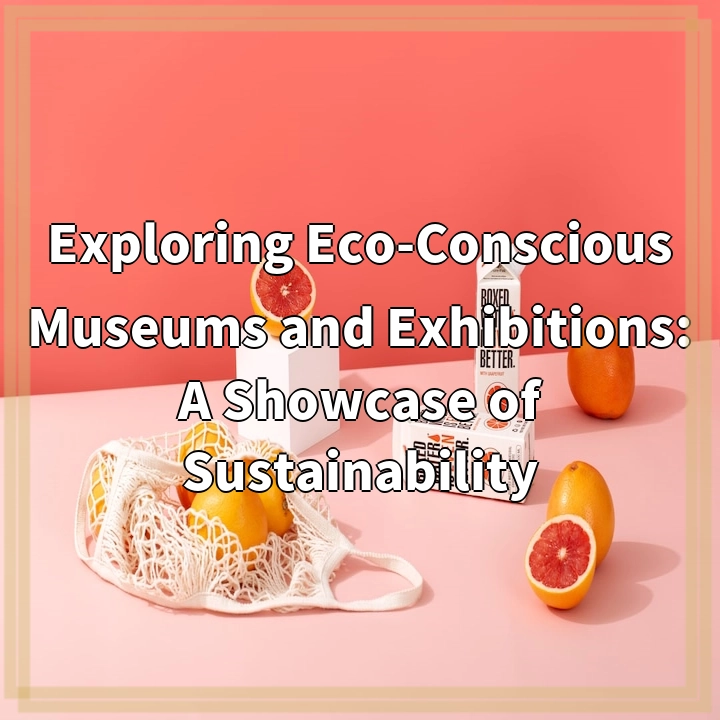
What it is:
Eco-conscious museums and exhibitions are institutions that prioritize environmental sustainability in their operations, programming, and overall ethos. These institutions recognize the importance of promoting environmental awareness, education, and action through their cultural offerings. They aim to minimize their ecological footprint by implementing green practices, using renewable energy sources, reducing waste, and conserving water and resources.
Real-world problems associated with eco-conscious museums and exhibitions:
1. Limited funding:
Eco-conscious initiatives often require significant financial investments, which can be a challenge for museums and exhibitions operating on limited budgets. Finding funding sources, securing grants, and seeking sponsorship opportunities become vital to support sustainability efforts.
2. Balancing preservation and sustainability:
Museums and exhibitions face the challenge of balancing their mission to preserve cultural heritage and artifacts with the need to implement sustainable practices. Finding sustainable alternatives for preservation methods, materials, and transportation can be complex and require extensive research and planning.
3. Ensuring accessibility and inclusivity:
While striving for environmental sustainability, museums and exhibitions must also ensure accessibility and inclusivity for all visitors. This includes providing accommodations for individuals with disabilities, promoting diversity in programming, and addressing any potential barriers to access caused by sustainability initiatives.
4. Educating and engaging visitors:
One of the main goals of eco-conscious museums and exhibitions is to raise awareness and encourage sustainable practices among visitors. However, effectively conveying complex environmental concepts and inspiring behavior change can be challenging. Finding innovative ways to educate and engage visitors in a compelling and actionable manner is crucial.
5. Measuring impact and accountability:
Measuring the impact of eco-conscious initiatives and holding institutions accountable for their sustainability practices is necessary to ensure ongoing improvements. Developing robust metrics, conducting regular audits, and transparently reporting on environmental performance can be demanding but are essential for tracking progress and identifying areas for improvement.

Summary of Solutions:
Addressing the real-world problems associated with eco-conscious museums and exhibitions requires proactive solutions and strategic planning. Here are some solutions to tackle these challenges:
1. Diversifying funding sources:
Museums and exhibitions can explore diverse funding opportunities, including partnerships with environmental organizations, corporate sponsorships, and crowdfunding campaigns, to support their sustainability initiatives.
2. Integrating preservation and sustainability:
By collaborating with experts in conservation and sustainable practices, museums and exhibitions can find innovative ways to combine preservation goals with eco-friendly methods, such as utilizing energy-efficient climate control systems and sustainable materials.
3. Ensuring inclusive sustainability:
It is essential for museums and exhibitions to prioritize accessibility and inclusivity while implementing sustainability measures. This can be achieved by actively involving diverse communities in their programming, providing accessibility features, and considering the needs of all visitors during their sustainability efforts.
4. Enhancing visitor education and engagement:
Museums and exhibitions can employ interactive displays, immersive technology, and educational programs to effectively communicate environmental concepts and inspire visitors to adopt sustainable practices in their daily lives.
5. Establishing robust measurement and reporting systems:
By setting clear environmental goals, tracking key performance indicators, and regularly reporting their sustainability achievements, museums and exhibitions can demonstrate transparency and accountability, driving continuous improvement and inspiring others in the field.















